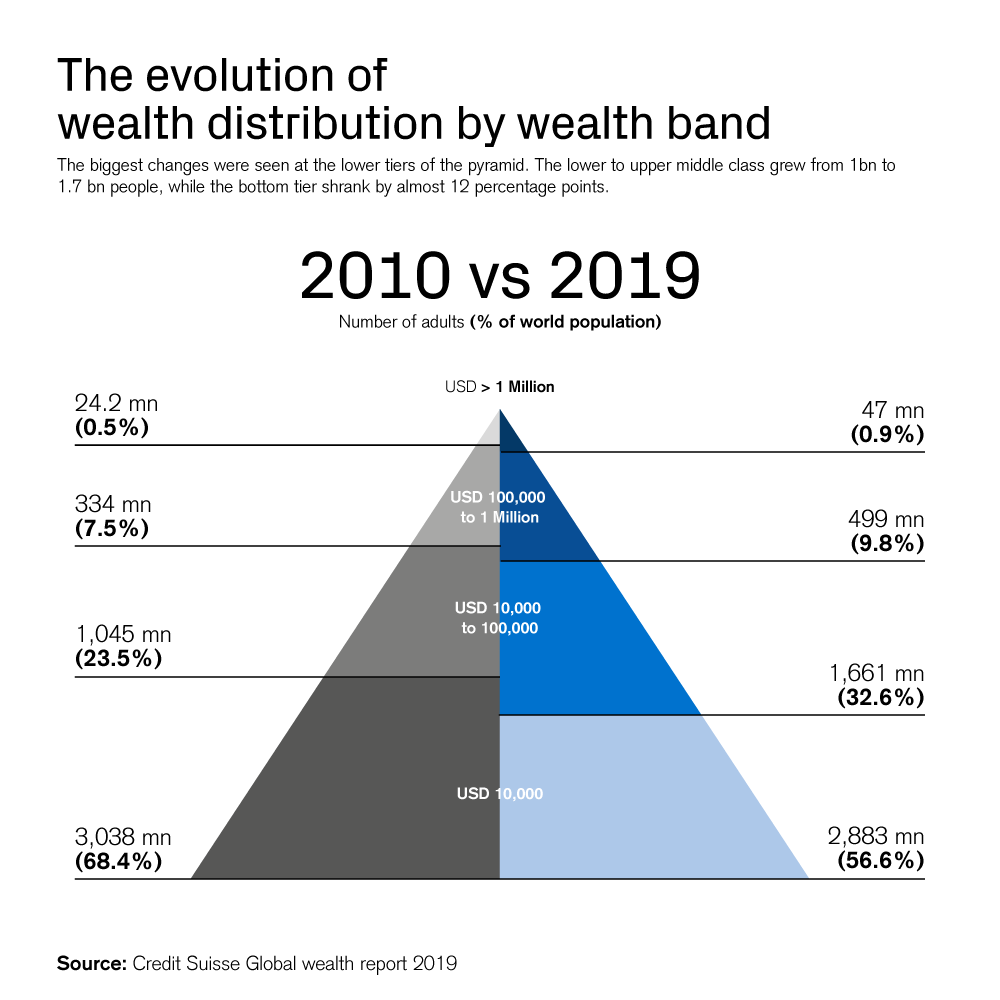A million. That’s how many more dollar millionaires there are in the world that there were last year, according to a Global Wealth Report.
Interestingly, Australia lost 124,000 millionaires last year following a fall in average wealth, and was the only country recording a drop of more than 2% in house prices (-6%). 
By mid-2019 the world had 46.8 million millionaires, up 1.1 million on 2018, the Credit Suisse report said.
By 2024, it’s predicted that will rise to 63 million.
Credit Suisse analysed the household wealth of people across the globe for the 10th year in a row.
Here are some of the key findings:
1. Average wealth per adult is at a record high
In the past year, global wealth grew by $9.1 trillion to $360.6 trillion – a rate of 2.6% – with the US, China and Europe contributing the most.
Wealth growth exceeded population growth, so average wealth per adult rose to $70,850 – an all-time high.
2. Switzerland saw the biggest wealth gains – and Australia the biggest losses

In terms of wealth per adult, the biggest winners were in Switzerland this year, with a growth of $17,790.
Australia was at the other end of the scale, with losses of $28,670 per adult, largely down to exchange rate effects.
Australia lost 124,000 millionaires following a fall in average wealth, and was the only country recording a drop of more than 2% in house prices (-6%).
3. China has the most people in the top 10%: 100 million
In the 21st century, total household wealth in China has risen from $3.7 trillion to $63.8 trillion and it’s second only to the United States for total household wealth.
It now has 4.4 million millionaires and reached a landmark this year, overtaking the US for the first time to become the country with most people in the top 10% of global wealth distribution.
4. The wealthiest 1% own almost half of global wealth

In terms of wealth inequality, the bottom half accounted for less than 1% of total global wealth in mid-2019, while the richest 1% own 45%.
While the top 1% have increased their wealth in the past decade, this trend is likely to “edge downward in the immediate future”, the report says.
As the above chart shows, the bottom tier, representing those who own less than $10,000, shrank over the past decade, from 68.4% to 56.6%.
5. Women’s wealth has risen because more are joining the workforce
“Women’s wealth has grown relative to that of men in most countries due to rising female labor force participation, more equal division of wealth between spouses and other factors,” the report said.
from Property UpdateProperty Update https://propertyupdate.com.au/australia-lost-124000-millionaires-last-year-global-wealth-report/

No comments:
Post a Comment